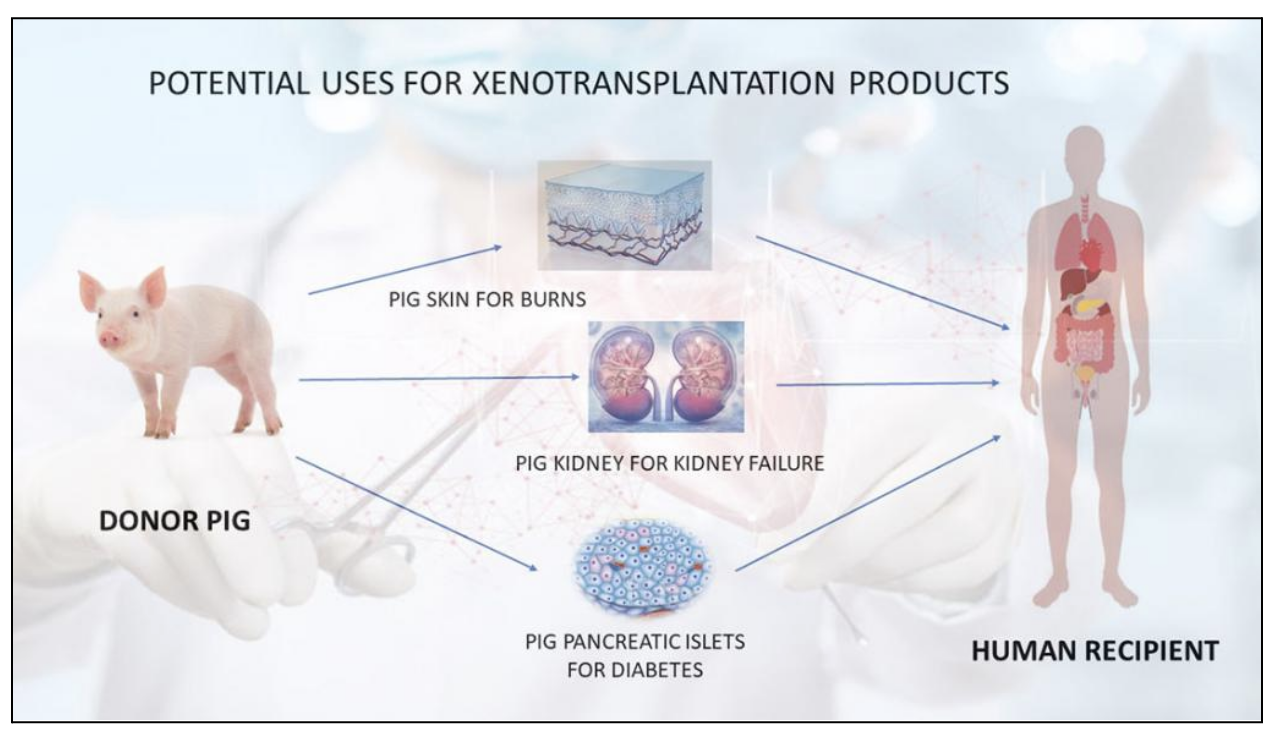News Excerpt:
Richard Slayman, the first human recipient of a pig kidney transplant in March 2024, dies.
What is Xenotransplantation?
- According to the US Food and Drug Administration (FDA), “Xenotransplantation is any procedure that involves the transplantation, implantation or infusion into a human recipient of either (a) live cells, tissues, or organs from a nonhuman animal source, or (b) human body fluids, cells, tissues or organs that have had ex vivo contact with live nonhuman animal cells, tissues or organs.”
- Essentially, it is the use of animal cells and organs to heal humans.
- Xenotransplantation involving the heart was first tried in humans in the 1980s.
- The need for such a procedure was felt because of the significant gap between the number of transplants needed by patients and the availability of donor organs.

How does Xenotransplantation happen?
- Sewing a pig kidney into a donated body isn’t much different than a regular transplant, and post-surgery immune-suppressing drugs are standard too.
- But there are several crucial additional steps:
- The selected animal organ has to undergo genetic modifications, so the human body does not reject it.
- The gene editing technology CRISPR-Cas9 was employed to “Remove certain pig genes that produce sugars with antibodies our immune systems react to” and “Add certain human genes to improve the kidney’s compatibility with humans.”
- Even after the operation, constant monitoring needs to be done to check the body’s response to the organ.
Why are pigs often used for Xenotransplantation?
- Currently, pigs, monkeys, chimpanzees, and baboons are among the large animals that have been utilized in xenotransplantation.
- Because of their similar organ sizes, physiological metabolisms, and immune systems to humans, pigs are thought to be the best candidates to donate organs for xenografts.
- The pig’s anatomical and physiological parameters are similar to those of humans, and the breeding of pigs on farms is widespread and cost-effective.
- Also, many varieties of pig breeds are farmed, which allows the size of the harvested organs to be matched with the specific needs of the human recipient.
- For example: In January 2022, the first xenotransplantation of a genetically modified pig heart was done. However, the patient passed away after two months due to a range of factors, including being tainted with a latent virus in the pig's heart, which may have contributed to the dysfunction of the transplant.
What are the complications of xenotransplantation?
- It has to be ensured that the body does not reject the organ.
- One method of doing this is embedding the pig’s thymus gland, responsible for “educating” the immune system, underneath the outer layer of the kidney. This helps keep away any new or delayed immune responses.
- Potential infection of recipients with both recognised and unrecognised infectious agents and the possible subsequent transmission to their close contacts and into the general human population.
- The possibility of cross-species infection by retroviruses which may be latent and lead to disease years after infection.


